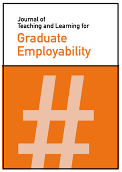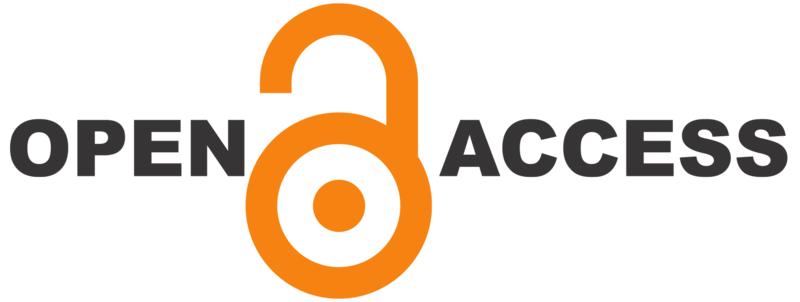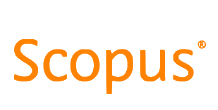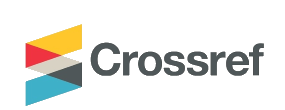“Physically present, but emotionally present, too”: Graduates of Colour developing emotional intelligence as student employees
DOI:
https://doi.org/10.21153/jtlge2025vol16no1art1892Keywords:
Graduates of Colour, Students of Colour, college students, emotional intelligence, employability, career readiness, student employment, on-campus employmentAbstract
Despite a robust body of literature related to how institutions of higher education help prepare students for the workforce after graduation, little research has explored the lived experiences of Students of Colour as they reflect on their undergraduate employment as it relates to their development of marketable skills. Moreover, no studies have engaged with Graduates of Colour to understand whether they developed emotional intelligence as undergraduate student employees. To fill a considerable gap in the literature, this qualitative study, framed by Salovey and Mayer’s (1990) model of emotional intelligence, explored the undergraduate student affairs (student support) employment experiences of 12 Graduates of Colour (now professionals) to understand how they developed emotional intelligence to be more successful employees and leaders in their respective workplaces. The findings suggest Graduates of Colour developed all four tenets of emotional intelligence during their undergraduate employment experience, with direct impacts on their work in their careers. Implications for research and practice in universities are discussed.
Metrics
References
Abacioglu, C. S., Volman, M., & Fischer, A. H. (2021). Teacher interventions to student misbehaviors: The role of ethnicity, emotional intelligence, and multicultural attitudes. Current Psychology, 40(12), 5934–5946. https://doi.org/10.1007/s12144-019-00498-1
Ambarwati, W. (2018). Influence of parents' attention, emotional intelligence and learning motivation to learning outcomes. Journal of Education, Teaching and Learning, 3(1), 72–81. https://www.learntechlib.org/p/209113/
Athas, C., Oaks, D. J., & Kennedy-Phillips, L. (2013). Student employee development in student affairs. Research & Practice in Assessment, 8, 55–68. https://www.rpajournal.com/dev/wp-content/uploads/2013/11/A3.pdf
Banks, T., & Dohy, J. (2019). Mitigating barriers to persistence: A review of efforts to improve retention and graduation rates for Students of Color in higher education. Higher Education Studies, 9(1), 118–131. https://eric.ed.gov/?id=EJ1203738
Bentrim, E., Sousa-Peoples, K., Kachellek, G., & Powers, W. (2013). Assessing learning outcomes: Student employees in student affairs. About Campus, 18(1), 29–32. https://doi.org/10.1002/abc.21110
Blau, G., & Snell, C. M. (2013). Understanding undergraduate professional development engagement and its impact. College Student Journal, 47(4), 689–702. https://tinyurl.com/bdzx5pue
Bluml, J. F. (2019). On-campus employment and retention of first-time, full-time college students [Doctoral dissertation, Walden University]. ProQuest. https://scholarworks.waldenu.edu/dissertations/6973
Brackett, M. A., Rivers, S. E., & Salovey, P. (2011). Emotional intelligence: Implications for personal, social, academic, and workplace success. Social and Personality Psychology Compass, 5(1), 88–103. https://doi.org/10.1111/j.1751-9004.2010.00334.x
Bradberry, T., & Greaves, J. (2009). Emotional intelligence 2.0. TalentSmart.
Burnett, C. A. (2021). Learning for earning: Undergraduate student affairs employment and postgraduate employability outcomes. [Doctoral dissertation, The University of Texas at Austin]. Texas ScholarWorks. http://dx.doi.org/10.26153/tsw/31954
Burnett, C. A., & Taylor, Z. W. (2020). Perspiration before graduation: Pre-graduation, on-campus employment to bolster marketable skills in higher education. In S. Sharma & M. S. El Namaki (Eds.), The economics of skills: Pathways to employability. CSMFL Publications. https://doi.org/10.21013/978819406928701
Burnett, C. A., & Taylor, Z. W. (2022). Skills to pay the bills: A review of college student employability literature. Essays in Education, 28(2), 1–52. https://openriver.winona.edu/eie/vol28/iss2/2
Burnett, C.A, & Taylor, Z.W. (2023). “Rec sports was so good for me”: How college graduates developed marketable skills as recreational sports student employees. Recreational Sports Journal, 47(2), 136-147. https://doi.org/10.1177/15588661231186805
Burnett, C., & Taylor, Z. W. (2025). Interview protocol. ResearchGate. https://doi.org/10.13140/RG.2.2.28272.78082
Burnside, O., Wesley, A., Wesaw, A., & Parnell, A. (2019). Employing student success: A comprehensive examination of on-campus student employment. NASPA: Student Affairs Administrators in Higher Education. https://tinyurl.com/3ha98wkx
Carnevale, A. P., Strohl, J., Gulish, A., Werf, M. Van Der, & Campbell, K. P. (2019). The unequal race for good jobs: How Whites made outsized gains in education and good jobs compared to Blacks and Latinos. Georgetown University Center on Education and the Workforce. https://tinyurl.com/878fz5vn
Cherniss, C. (2000, April 15). Emotional intelligence: What it is and why it matters. Paper presented at the Annual Meeting of the Society for Industrial and Organizational Psychology, New Orleans, LA. https://secure.tutorsglobe.com/Atten_files/237_What-it-is-and-why-it-matters.pdf
Crenshaw, K. (1989). Demarginalizing the intersection of race and sex: A black feminist critique of antidiscrimination doctrine, feminist theory and antiracist politics. University of Chicago Legal Forum, 1989(8), 139–167. https://chicagounbound.uchicago.edu/uclf/vol1989/iss1/8
Dulewicz, V., & Higgs, M. (2000). Emotional intelligence – A review and evaluation study. Journal of Managerial Psychology, 15(4), 341–372. https://doi.org/10.1108/02683940010330993
Elias, M. J., & Arnold, H. (2006). The educator's guide to emotional intelligence and academic achievement: Social-emotional learning in the classroom. SAGE Publications.
Elliott, R., & Smith, E. (2022). Not just a job: How identity shapes the on-campus student employment experience. College Student Journal, 56(3), 197–204. https://eric.ed.gov/?id=EJ1379538
Emple, M. J. (2012). How graduates make meaning of their on-campus employment: A retrospective view [Doctoral dissertation, Iowa State University]. ProQuest. https://www.proquest.com/docview/1022994022
Fall, L. T., Kelly, S., MacDonald, P., Primm, C., & Holmes, W. (2013). Intercultural communication apprehension and emotional intelligence in higher education: Preparing business students for career success. Business Communication Quarterly, 76(4), 412–426. https://doi.org/10.1177/1080569913501861
Foster, J. W. (2019). Division of student affairs student employees make meaning of their intersecting identities and work [Doctoral dissertation, University of Northern Colorado]. University of Northern Colorado. https://digscholarship.unco.edu/dissertations/601
Freeman, M. A. (2014). Emotional intelligence and racial identity's impact on academic achievement in American multiracial high school students [Doctoral dissertation, Pepperdine University]. Pepperdine Digital Commons. https://digitalcommons.pepperdine.edu/etd/512
Fried, J. (2012). Transformative learning through engagement: Student affairs practice as experiential pedagogy. Routledge.
Giles-Gee, H. F. (1989). Increasing the retention of Black students: A multimethod approach. Journal of College Student Development, 30(3), 196–200. https://psycnet.apa.org/record/1989-41223-001
Hammond, M. S., Lockman, J. D., & Boling, T. (2010). A test of the tripartite model of career indecision of Brown and Krane for African Americans incorporating emotional intelligence and positive affect. Journal of Career Assessment, 18(2), 161–176. https://doi.org/10.1177/1069072709354201
Hora, M. T. (2016). Beyond the skills gap: Preparing students for life and work. Harvard Education Press.
Jaeger, A. J., & Eagan, M. K., Jr. (2007). Exploring the value of emotional intelligence: A means to improve academic performance. NASPA Journal, 44(3), 512–537. https://doi.org/10.2202/1949-6605.1834
Kuh, G., O'Donnell, K. O., & Schneider, C. G. (2017). HIPS at ten. Change: The Magazine of Higher Learning, 49(5), 8–16. https://doi.org/10.1080/00091383.2017.1366805
Landry, L. (2019, April 3). Why emotional intelligence is important in leadership. Harvard Business Review. https://online.hbs.edu/blog/post/emotional-intelligence-in-leadership
Ludeman, R. B. (2022). Basic principles, values, and beliefs that support an effective student affairs and services programme in higher education. Journal of Higher Education Policy and Leadership Studies, 3(1), 163–168. https://doi.org/10.52547/johepal.3.1.163
McClellan, G. S., Creager, K., & Savoca, M. (2018). A good job: Campus employment as a high-impact practice. Stylus.
Miles, M. B., Huberman, A. M., & Saldaña, J. (2014). Qualitative data analysis: A methods sourcebook (4th Ed). SAGE Publishers.
Pascarella, E. T., & Terenzini, P. T. (2005). How college affects students: A third decade of research, Volume 2. Jossey-Bass.
Patton, M. (2014). Qualitative research & evaluation methods (4th Ed.). SAGE Publishers.
Peck, A., Hall, D., Cramp, C., Lawhead, J., Fehring, K., & Simpson, T. (2016). The co-curricular connection: The impact of experiences beyond the classroom on soft skills. NACE Journal, 1–7. https://career.sites.clemson.edu/symposium/The_Cocurricular_Connection_2016.pdf
Perozzi, B. (2019). Leadership development through transforming the student employment process. New Directions for Student Leadership: Special Issue: Leadership Development through Campus Employment, 2019(162), 23–36. https://doi.org/10.1002/yd.20331
Quaye, S., Griffin, K. A., & Museus, S. D. (eds.) (2014). Engaging Students of Colour: Student engagement in higher education. Routledge.
Riggert, S. C., Boyle, M., Petrosko, J. M., Ash, D., & Rude-Parkins, C. (2006). Student employment and higher education: Empiricism and contradiction. Review of Educational Research, 76(1), 63–92. https://doi.org/10.3102/00346543076001063
Romanelli, F., Cain, J., & Smith, K. M. (2006). Emotional intelligence as a predictor of academic and/or professional success. American Journal of Pharmaceutical Education, 70(3), 69. https://pmc.ncbi.nlm.nih.gov/articles/PMC1636947/
Salovey, P., & Mayer, J. D. (1990). Emotional intelligence. Imagination, Cognition and Personality, 9(3), 185–211. https://doi.org/10.2190/DUGG-P24E-52WK-6CDG
Singh, D. (2015). Emotional Intelligence at Work: A Professional Guide, 4th Edition. SAGE Publishers.
Smith, J. D., Lassiter, P. S., & Gutierrez, D. (2020). Examining the relationship of emotional intelligence and cultural empathy in addiction counselors. Journal of Addictions & Offender Counseling, 41(2), 97–110. https://doi.org/10.1002/jaoc.12083
Spradley, J. P. (1979). The ethnographic interview. Waveland Press.
Stokes, P. J. (2015). Higher education and employability: New models for integrating study and work. Harvard Education Press.
Su, M. (2018). Work a way out: Breaking monoethnic isolation through on-campus employment. Journal of International Students, 8(3), 1363–1385. https://doi.org/10.5281/zenodo.1254596
Sullivan, L., Meschede, T., Dietrich, L., Shapiro, T., Traub, A., Ruetschlin, C., & Draut, T. (2016). The racial wealth gap: Why policy matters. Princeton University Monographs. http://arks.princeton.edu/ark:/88435/dsp012z10wt38q
Tominey, S. L., O’Bryon, E. C., Rivers, S. E., & Shapses, S. (2017). Teaching emotional intelligence in early childhood. YC Young Children, 72(1), 6–14. https://www.jstor.org/stable/90001479
Turner, C. S. V. (1994). Guests in someone else’s house: Students of Colour. The Review of Higher Education, 17(4), 355–370. https://doi.org/10.1353/rhe.1994.0008
U.S. Department of Education. (2025). Title I. U.S. Department of Education. https://www.ed.gov/laws-and-policy/laws-preschool-grade-12-education/title-I
Wilkie, C., & Jones, M. (1994). Academic benefits of on-campus employment to first-year developmental education students. Journal of the First-Year Experience & Students in Transition, 1994(2), 37–56. https://www.ingentaconnect.com/content/fyesit/fyesit/1994/00000006/00000002/art00002
Wood, J. L., & Williams, R. C. (2013). Persistence factors for black males in the community college: An examination of background, academic, social, and environmental variables. Spectrum: A Journal on Black Men, 1(2), 1–28. https://doi.org/10.2979/spectrum.1.2.1
Yosso, T. (2005). Whose culture has capital? A critical race theory discussion of community cultural wealth. Race Ethnicity and Education, 8(1), 69–91. https://doi.org/10.1080/1361332052000341006
Zhoc, K. C. H., King, R. B., & Chung, T. S. H. (2020). Emotionally intelligent students are more engaged and successful: Examining the role of emotional intelligence in higher education. European Journal of Psychology of Education, 35, 839–863. https://doi.org/10.1007/s10212-019-00458-0
Zirkel, S. (2004). What will you think of me? Racial integration, peer relationships, and achievement among White students and students of Colour. Journal of Social Issues, 60(1), 57–74. https://doi.org/10.1111/j.0022-4537.2004.00099.x

Downloads
Published
Issue
Section
License
Copyright (c) 2025 Christopher A. Burnett, Zach W. Taylor

This work is licensed under a Creative Commons Attribution-NonCommercial 4.0 International License.











